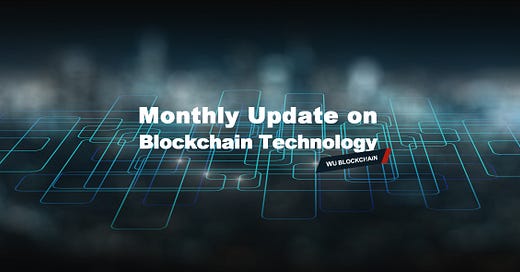April Update on Blockchain Technology: Bitcoin Covenant Discussions, Pectra Mainnet Upgrade Date Confirmed, Solana Block Space Expansion
Written by : GaryMa, WuBlockchain
The WuBlockchain summarizes key developments in the blockchain technology space for April:
Bitcoin
● Discussion on Bitcoin’s Anti-Quantum Theft Solutions:
○ Destroy quantum-vulnerable bitcoins after implementing a quantum-resistant upgrade and allowing sufficient migration time for users.
○ Prove UTXO ownership through SHA256 (or other quantum-resistant commitment) pre-images.
○ A BIP draft proposes multiple approaches to destroy quantum-vulnerable bitcoins, emphasizing mandatory migration deadlines to protect Bitcoin’s long-term security.
●Community Discussions on Soft Fork to Introduce OP_CHECKTEMPLATEVERIFY (CTV) and OP_CHECKSIGFROMSTACK (CSFS):
○ Support for CTV+CSFS: Highlighted optimization potential for DLCs, vaults, BitVM, LN-Symmetry, Ark, and Liquid — CTV is especially crucial for Ark.
○ Criticism and Caution: Questioned CTV’s motivation (recursive covenant contradiction), tool readiness, need for DLC/BitVM, and favored alternative languages like bll and Simplicity.
○ Technical Additions: CCV supports covenant transfers, tools like Minsc are being improved.
○ Consensus Cleanup: Multiple bug fixes applied, though disabling 64-byte transactions and coinbase locktime flag sparked controversy.
Ethereum
● Pectra Mainnet Upgrade scheduled for May 07 at 10:05 UTC / Epoch 364032.
● Vitalik proposed a long-term plan on Ethereum Magicians to replace the current execution-layer virtual machine (EVM) with the open-source RISC-V instruction set architecture.
● Ethereum developers decided to remove EOF from the Fusaka upgrade. (Includes Fusaka Meta EIP listing all considered EIPs.)
Solana
● Anza Reported Vulnerability in Solana Virtual Machine (SVM)’s ed25519 and secp256k1 precompiles, affecting validators running v2.2 with — transaction-structure view enabled. The bug, reported by Temporal on April 9, was patched in v2.2.8 released April 11 by Anza, removing alignment assumptions. The vulnerability does not affect fund security. Anza recommends disabling the view flag and upgrading to the patched version.
● Solana to Double Block Space by year-end, targeting a 100M CU block limit, according to Anza’s VP of Core Engineering. Related proposals include SIMD-0207 (already activated, raised limit to 50M CU) and SIMD-0256 (under review, aims for 60M CU).
● “Confidential Transfers” Feature Expanded to “Confidential Balances”, covering transfers, fees, minting, and burning. Backend already implemented in Rust, with a JavaScript zero-knowledge proof library expected in 2025. Users will be able to generate and verify proofs via browser or mobile wallets for client-side private transfers.
BNB Chain
● Lorentz Mainnet Hard Fork Upgrade Completed, reducing opBNB block time to 0.5 seconds and BSC to 1.5 seconds. The upcoming Maxwell Upgrade in June 2025 will further reduce BSC mainnet block time to 0.75 seconds.
Near
● NEAR Infrastructure Committee Issued RFP to build a relay infrastructure based on chain abstraction. The self-service platform will allow developers to sponsor gas fees seamlessly or enable users to pay for multi-chain transactions themselves using base tokens (ETH, SOL) or stablecoins (USDT/USDC).
Hyperliquid
● HyperEVM Mainnet Launched Read Precompiles, a core feature that allows smart contracts to atomically and efficiently read on-chain state (e.g., prices, order book data) from HyperCore. This removes reliance on external oracles and enhances the reliability, performance, and innovation capacity of DeFi apps. By combining high-performance financial primitives with a general EVM programming environment, it equips developers with powerful tools for building next-gen DeFi applications.
Others
● Category Labs Introduced MonadBFTon Twitter, a future consensus protocol for Monad. Based on the HotStuff protocol, it incorporates hybrid signature schemes and pipeline design to achieve high performance and scalability. Key features include tail-fork resistance, one-round speculative finality, optimistic responsiveness, and linear complexity — yielding 10k tx/s throughput, sub-second finality, and network stability. Its main innovation lies in a forced re-proposal mechanism to protect honest validators’ efforts, curb malicious MEV extraction, and enhance UX.
● Researchers Proposed a Hybrid Privacy Address Protocol combining Curvy and Module-LWE technologies to maintain Ethereum compatibility while achieving higher scanning efficiency than current solutions.
● Researchers Introduced Trusted Compute Units (TCU), a framework combining trusted execution environments (TEE) and zero-knowledge virtual machines (zkVM) to ensure verifiability and privacy in off-chain complex computation — suitable for use cases like federated learning.
● Scroll Became the First zk-Rollup to Reach Stage 1, achieving major upgrades via the Euclid update:
1. Disables arbitrary upgrades, ensuring users have enough time to exit before any system changes.
2. Eliminates censorship risk — users can submit transactions directly on Layer 1 for forced execution.
3. Ensures network liveness — if sequencers or provers go down, the network opens to everyone to maintain operation.
Follow us
Twitter: https://twitter.com/WuBlockchain
Telegram: https://t.me/wublockchainenglish




